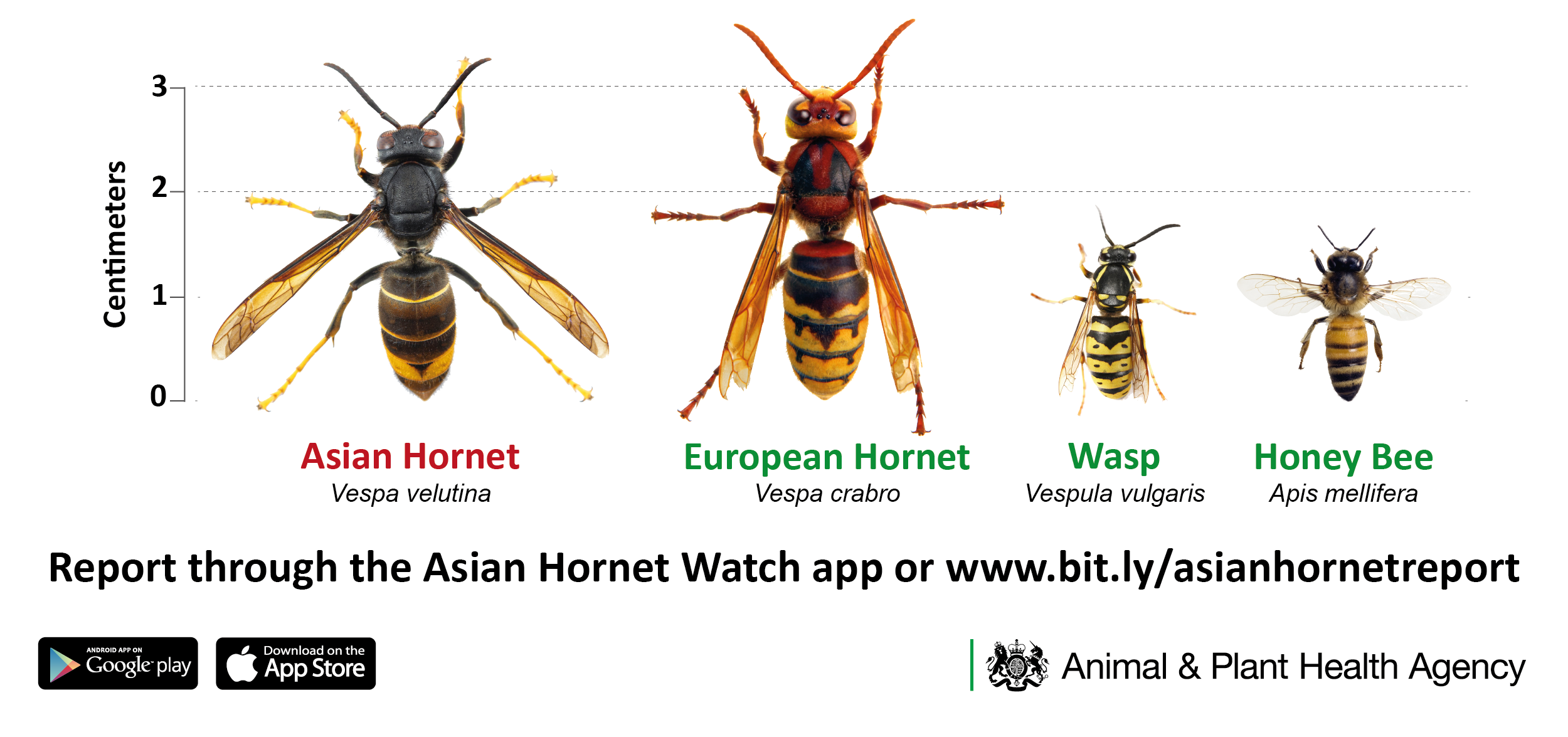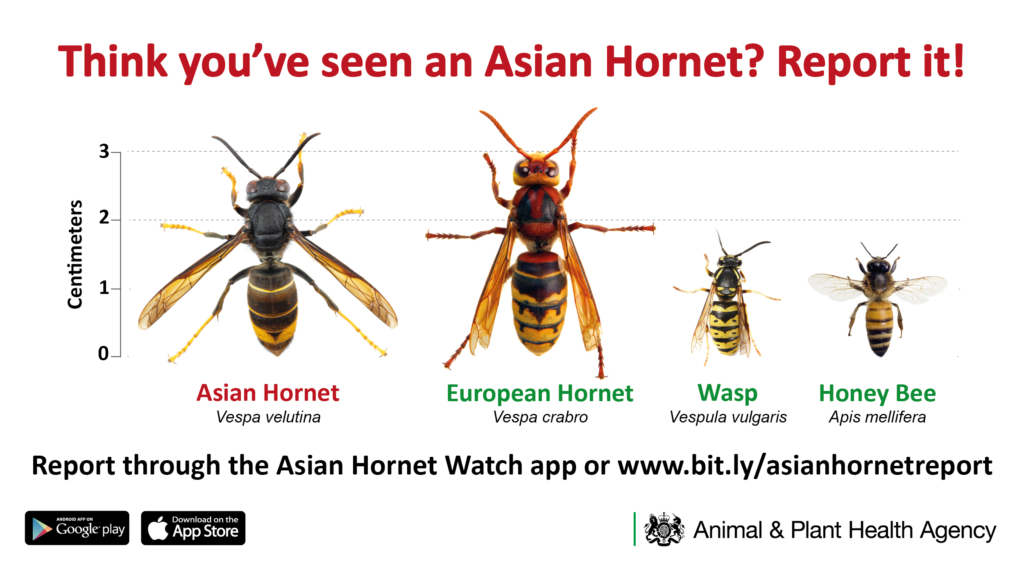Seen an Asian Hornet? Report it!

The British Beekeepers’ Association is urging gardeners across the country to remain vigilant and keep an eye out for an invasive species of insect that could wreak havoc on our native wildlife, as well as posing a risk to public health.
First discovered in the UK in 2016, the Asian Hornet has travelled to our shores from northern Europe, where there are now over half a million nests annually in France alone.
By 2022, just 16 Asian Hornet nests had been discovered in this country. But in 2023, this increased dramatically to 72 nests in 56 different locations – more than in the previous six years combined. Kent and other counties along the south coast have been most predominantly affected, but there have been sightings in locations across the country, including as far north as Scotland. A credible sighting has already been reported in January this year, sparking fears the non-native insect may soon become established in the UK.
Asian Hornets are destructive predators of honey bees, with one hornet capable of killing as many as 60 honey bees in a single day, and their habit of hovering outside the hive stops the bees from collecting nectar and pollen to feed themselves. Their diet also consists of mayflies, moths and butterflies, including their larvae and one nest alone can consume 12kg of insects. Many beekeepers are calling this the greatest threat to our native pollinators in a generation, more worrying for beekeepers than the discovery of the Varroa mite more than 30 years ago.
And there’s concern the increasing numbers of Asian Hornets will pose a significant risk to public health too. While one hornet alone is unlikely to cause a problem, they can be aggressively defensive of their nests, which are often built in hedgerows and brambles, meaning disturbances by unsuspecting individuals could have dangerous consequences. In Europe, where numbers have spiralled in recent years, the prevalence of the insect is having a huge impact on everyday life. Many outdoor markets in France have had to move inside to avoid their produce being eaten by the hornets, and in Portugal vineyards are harvesting at night to prevent their pickers from being stung.
An Asian Hornet can be identified by its very distinct markings – they’re a similar size to a European Hornet, which is two or three times the size of a common wasp, and are black with distinct yellow lower leg.
- Asian Hornet ID with wasps
Gardeners are being encouraged to familiarise themselves, and visitors to their sites, with how to identify the Asian Hornet, and to report any suspected sightings via the official Asian Hornet Watch app, which can be downloaded for Android and iOs devices. Experts from the Government’s National Bee Unit will then be able to track and trace the insect and determine if there is a nest nearby, and if so, safely dispose of it.
Field Signs
Active April-November (peak August/September). Mated queens over winter singly or in groups, in various natural and man-made harbourages – underneath tree bark in cavities left by beetle larvae, in soil, on ceramic plant pots – potentially any small, well-insulated refuge. Makes very large nests in tall trees in urban and rural areas, but avoids pure stands of conifers. Will use man made structures (garages, sheds etc.) as nesting sites.
For more information you can download this useful information sheets and poster.
NNSS Alert_poster_Vespa_velutina_A4-1














